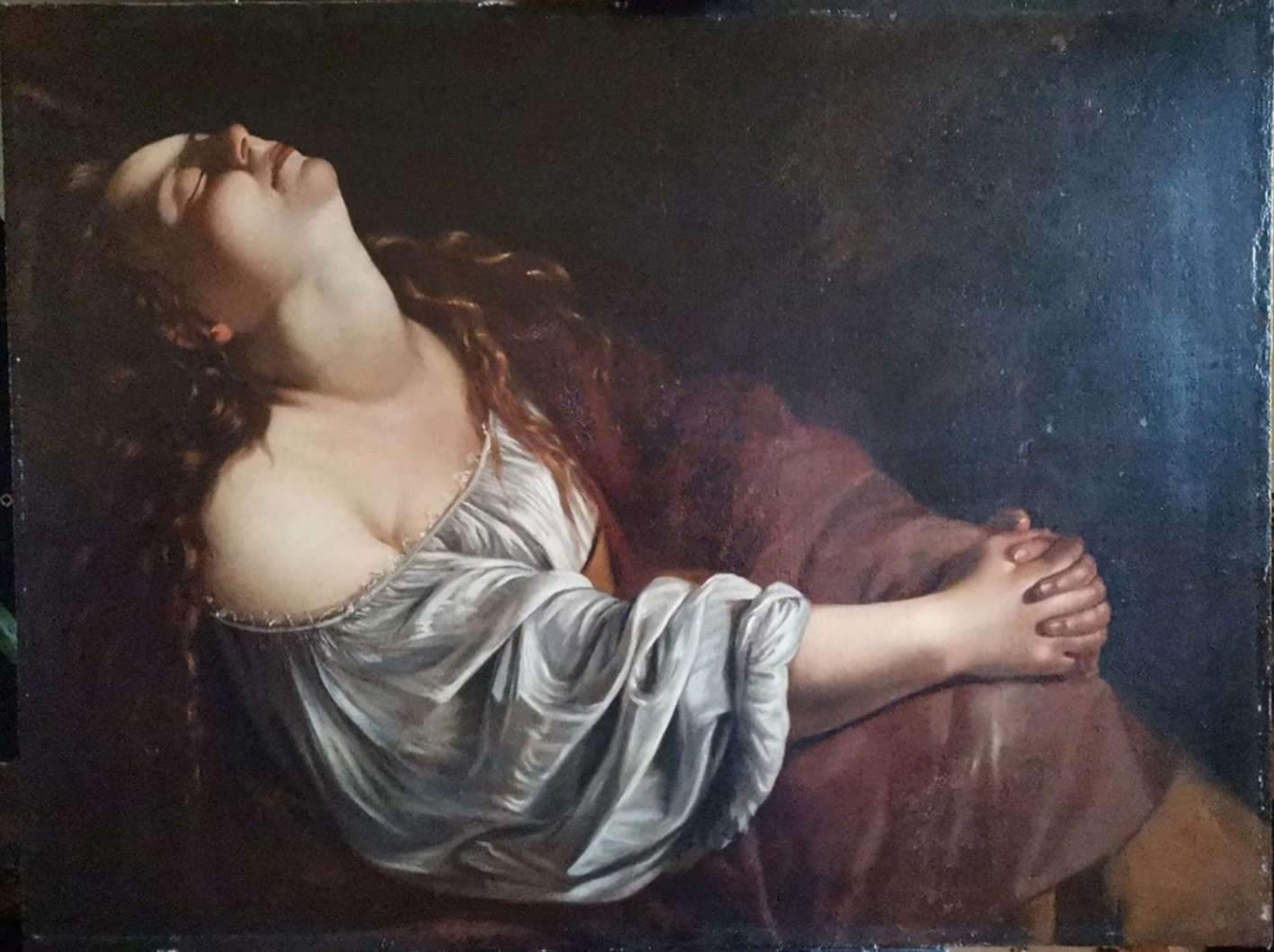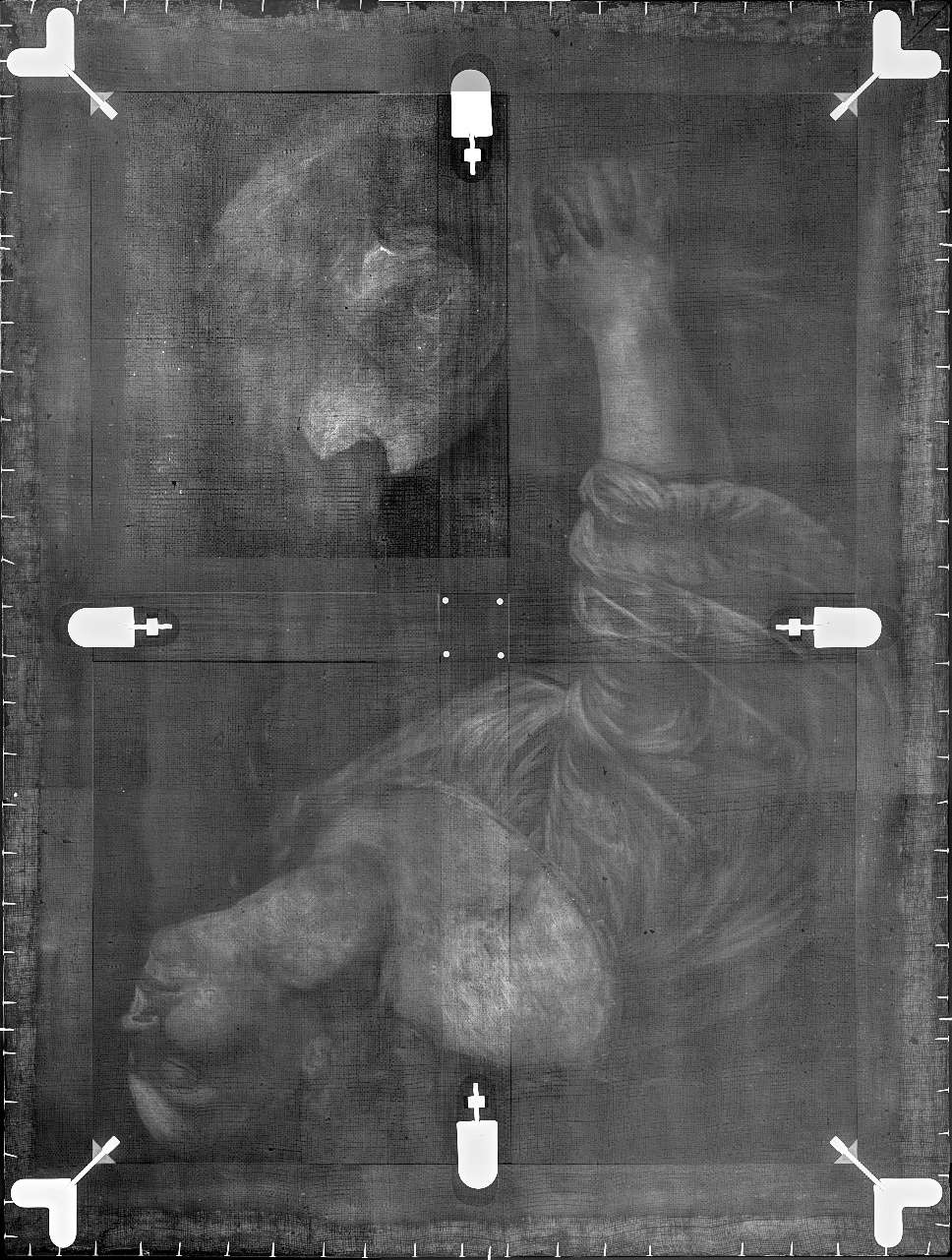New work by Artemisia Gentileschi discovered? What the scholar says
Is the newly discovered Magdalene in Ecstasy in an Italian private collection really a work by Artemisia Gentileschi ? This is the opinion of art historian Delia Somma, who has subjected the painting to several studies, published in the book L’estasi di Artemisia Gentileschi: Indagine storico-scientifica di un’opera inedita (Tab Editions), to come to the conclusion that the work, purchased by its current owners from a noble family in Turin, where it was inventoried generically as a seventeenth-century work, would be an autograph of the painter.
The canvas, in particular, turns out to be a replica of Magdalene in Ecstasy exhibited at the Doge’s Palace in Venice, a work by Artemisia Gentileschi. In the seventeenth century, the request for a replica of a work attested to the value and success of the artist’s iconographic invention. This was a common practice in both Orazio Gentileschi ’s workshop and that of his daughter Artemisia. However, Artemisia distinguished herself by never slavishly replicating her works, making changes in proportions, details, and color scheme. This distinctive trait would also be evident, according to Delia Somma, in the newly rediscovered Magdalene in Ecstasy.
One of the main differences between the Magdalene in Ecstasy from the Doge’s Palace in Venice and the new discovery lies in the color of the robes, a solution that Artemisia used several times in her painting production. In both works, the figure of Magdalene seems barely bent to the size of the canvas, creating a sense of compression that magnifies the figure, giving the saint a powerful hypnotic effect.


The rediscovered canvas can be dated to Artemisia’s early Neapolitan period, as evidenced by the presence of Naples yellow pigment. With a skillful balance of light and darkness, characteristic of Gentileschi’s pictorial language, the artist expresses all the emotional and spiritual charge of Magdalene, a contradictory figure of Christianity, torn between the shadow of sin and the light of mystical heights. Delia Somma’s studies also revealed that the work was painted on a reused canvas, since it features below the paint film the face of a putto, sketched in light brushstrokes and part of a larger composition than the actual canvas.
“In the corpus of Artemisia’s works,” Somma writes in his study, "there are several instances of reuse canvases, that is, ones that present an unmade work beneath the pictorial film. Even in our Magdalene in Ecstasy, an unaccomplished work was found through X-rays. Artemisia’s unrealized design, thus the position of the putto or Christ child in the upper left corner, lead one to think that she was devising a composition of figures to be painted in a much larger dimension than those on the present canvas."
The coexistence of different drafts on a single canvas is indeed frequent in the corpus of studied works by Artemisia Gentileschi and is attested in famous works such as theSelf-Portrait as Saint Catherine of Alexandria in the National Gallery (1615-1617) composed of two canvases stitched together, or theSelf-Portrait as a Lute Player at the Wadsworth Atheneum Museum of Art in Hartford (1615-1617), where X-ray evidence has revealed the presence of a female head, upside down, at the left sleeve, and again theEsther and Ahasuerus (1626-1629) at the Metropolitan Museum of Art in which the painter altered, several times, the throne and platform and covered with repainting a child and a dog that were at the king’s feet. In the case of Magdalene, as is also the case in the late Susanna and the Old Men in the Pinacoteca di Bologna, “the composition,” Somma argues, "unfolds by defined and carefully designed parts. Around the child’s head we find the same halo halo, present in Bologna’s Susanna and the Old Men. Artemisia, therefore, discounts the figure on the brown preparation and then uses it en reserve in the final composition. This technique is common in the Neapolitan school, especially in Massimo Stazione, a friend of the painter. Sketchy brushstrokes have been found in analyses of several works by Artemisia Gentileschi, including in the Naples Judith Beheading Holofernes and the Aurora." Discovered, then, a new work by Artemisia?
 |
| New work by Artemisia Gentileschi discovered? What the scholar says |
Warning: the translation into English of the original Italian article was created using automatic tools. We undertake to review all articles, but we do not guarantee the total absence of inaccuracies in the translation due to the program. You can find the original by clicking on the ITA button. If you find any mistake,please contact us.



























